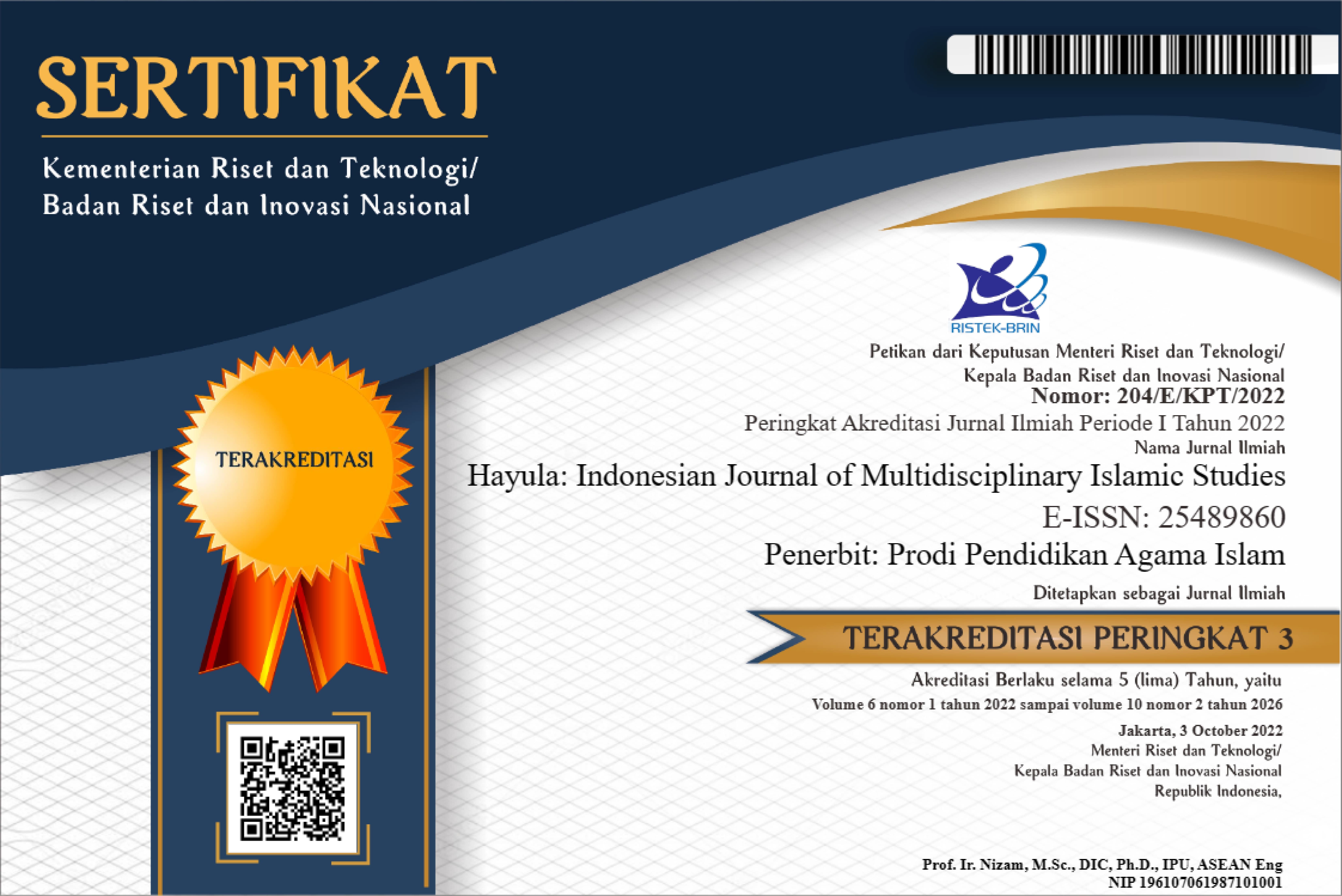Konversi Agama di Kalangan Etnis Tionghoa: Motivasi, Adaptasi dan Konsekuensi
DOI:
https://doi.org/10.21009/004.01.02Keywords:
religious conversion, religious conversion adaptation, adaptation, Ethnic, tionghoaAbstract
This paper aims to describe the process of religious conversion conducted by five ethnic Chinese muallafs at Yayasan Haji Karim Oei Jakarta. This study also describes the state of anomie experienced by muallafs in the post-religious conversion time and the adaptation to face the anomic circumstances. A qualitative approach with case study method is the research approach used in this research. The subjects in this study consisted of five muallafs converted to Islam. Observations and interviews were used as data collection methods in this study. This study uses the concept of systemic stage model by Rambo Lewis to examine the process of religious conversion and the concept of anomie by Emile Durkheim to examine the social state of post-religious conversion. The results of this study show that the religious conversion is caused by an internal factor which is an inner crisis and also caused by external factors such as living in a social sphere dominated by the majority of Muslims, the factor of marriage, and religious lectures performed by the religious leaders. The encounter and the interaction between muallafs and religious advocates have great influence in decisions taken by muallaf. It is found that the state of anomie experienced by the five muallafs was colored by the resistance in the form of unfair treatment and discrimination against the muallafs which led them into the state of isolation from the former religious group. The five muallafs who are in the state of anomie searched for the community and it is found that muallafs had a relationship with Yayasan Haji Karim Oei Jakarta as a coaching form for Chinese muallafs. It can be concluded that the five muallafs have adapted themselves to Islam and Muslims by using conformity type of adaptation, whereas adaptation within the former religious group used the innovation type of adaptation
References
Berry, David, (1995), Pokok-Pokok Pikiran dalam Sosiologi, Jakarta: PT Raja Grafindo Persada.
Carter, Eric M & Carter, Michael V (2014), Anomie, Deviance, and the Religious Factor: Data from 104 NFL Players, Journal of Sociology and Social Work December 2014, Vol. 2, No. 2, pp. 135–144
Garcia, Jennifer A., (2012), Conversion Theory Through the Cognitive Science of Religion Lense in a Christian-Muslim Context, Scripps Senior Theses. Paper 128, http://scholarship.claremont.edu/scripps_theses/128
Gooren, Henri (2007), Reassessing Conventional Approaches to Conversion: Toward a New Synthesis, Journal for the Scientific Study of Religion (2007) 46(3):337–353
Hendropuspito, D, (1983), Sosiologi Agama, Yogyakarta: Kanisius.
Hidayat, Rakhmat, (2014), Sosiologi Pendidikan Emile Durkheim, Jakarta: Rajawali Press.
Kok, Naomi (2016), Religious Conversion Compared, Thesis Master Department Theology and Religious Studies, Leiden: University Leiden.
Köse, Ali,. & Loewenthal, Kate Miriam (2000),Conversion Motifs Among British Converts to Islam, The International Journal for the Psychology of Religion, 10:2, 101-110, DOI: 10.1207/S15327582IJPR1002_03
Köse, Ali, (1996), Religious Conversion: Is It an Adolescent Phenomenon? The Case of Native British Converts to Islam, The International Journal for the Psychology of Religion, 6:4, 253-262, DOI: 10.1207/s15327582ijpr0604_2
Lewis, Rambo, (1993), Understanding Religious Conversion, Yale: Yale University Press.
Merton, Robert K. (1968) Social Theory and Social Structure. New York: The Free Press
Moleong, Lexy J. 2005, Metodologi Penelitian Kualitatif Edisi Revisi, Bandung: Remaja Rosdakarya.
O’Dea, Thomas F, (1994), Sosiologi Agama: Suatu Pengenalan Awal, Jakarta: PT Raja Grafindo Persada.
Sabiq, Sayyid, (2008), Fikih Sunnah, Jakarta: Cakrawala Publishing.
Zinnbauer, Brian J, and Kenneth I. Pargament, (1998) Spiritual Conversion: A Study of Religious Change among College Students, Journal for the Scientific Study of Religion, Vol. 37, No. 1 (Mar., 1998), pp. 161-180
Wawancara
Hasil wawancara dengan SH (Muallaf 1) pada Minggu, 15 November 2015.
Hasil wawancara dengan TL (Muallaf 2) pada Minggu, 15 November 2015.
Hasil wawancara dengan R (Muallaf 3) pada Minggu, 15 November 2015.
Hasil wawancara dengan K (Muallaf 4) pada Sabtu, 28 November 2015.
Hasil wawancara dengan OE (Muallaf 5) pada Sabtu, 28 November 2015.
Additional Files
Published
How to Cite
Issue
Section
License
Authors who publish with this Journal agree to the following terms:
- Author retain copyright and grant the journal right of first publication with the work simultaneously licensed under a creative commons attribution licensethat allow others to share the work within an acknowledgement of the work’s authorship and initial publication of this journal.
- Authors are able to enter into separate, additional contractual arrangementfor the non-exclusive distribution of the journal’s published version of the work (e.g. acknowledgement of its initial publication in this journal).
- Authors are permitted and encouraged to post their work online(e.g. in institutional repositories or on their websites) prior to and during the submission process, as it can lead to productive exchanges, as well as earlier and greater citation of published works.
Users/public use of this website will be licensed to CC BY







